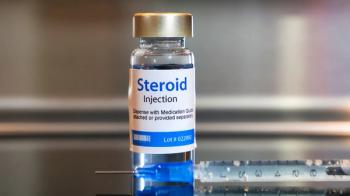
Predicting glaucoma progression: More than meets the eye
During the Glaucoma 360 annual meeting, Dake K. Heuer, MD, delivered the Shaffer-Hetherington-Hoskins Lecture Keynote address, titled “Risk Factors for Glaucoma Progression.”
Glaucoma is complicated and it has finally been recognized that elevated IOP is not the only risk factor for progression. An entire menu of risk factors is now available.
Dale K. Heuer, MD, discussed the factors that can be considered easily by physicians when evaluating their patients during his Shaffer-Hetherington-Hoskins Lecture Keynote address, titled “Risk Factors for Glaucoma Progression,” at the Glaucoma 360 annual meeting.
“Every patient should undergo risk calculation to determine management, treatment, and follow-up,” said Dr. Heuer, a retired professor and chair of ophthalmology, Medical College of Wisconsin, Milwaukee.
The frequency of visits and testing is important and facilitates the advisability of escalating or deescalating treatment more, adjusting target IOPs, and perhaps reducing costs. IOP remains the biggest risk factor that is treated.
Identifying progression
The Early Manifest Glaucoma Trial (EMGT) reported that the 77% of patients were more likely to have glaucoma progression. Predictive analysis showed that in patients who were evaluated at six, 12, and 18 months with IOPs under 14 mmHg were less likely to progress.
Those patients tested at the same time points with IOPs over 17 mmHg were more likely to progress.
Another consideration may be the peak pressure of a patient. Physicians should pay attention to outlier IOPs as indicators of risk.
Central corneal thickness is a non-modifiable risk factor and the most robust factor in the development of glaucoma. It is the most significant fact in patients with high IOPs. Importantly, it alerts the physician to a greater risk of ocular hypertension to primary open-angle glaucoma.
Pseudoexfoliation syndrome, while not a modifiable risk factor, alerts the physician to the risk of open-angle glaucoma progression in patients. These patients were more than two times likely to progress compared with those without pseudoexfoliation syndrome. Dr. Heuer pointed out that it is easy to identify.
Optic disc hemorrhages
Optic disc hemorrhages are also another entity to look for, he noted. The Collaborative Normal Tension Glaucoma Study found that the presence of optic disc hemorrhages translates to almost a three-fold greater risk of progression of glaucoma.
Another interesting observation, according to Dr. Heuer, was that lowering the IOP after a disc hemorrhage can slow the rate of change, which emphasizes the importance of treatment. Patients with disc hemorrhages and normal tension glaucoma or open angle glaucoma had a three to six times greater risk of progression, and are in a higher risk category as reported in a study from The Netherlands.
The presence of beta-zone parapapillary atrophy increases the risk of progression over two-fold, according to the New York Eye and Ear Infirmary. A later study from Korea reported a three-fold increase in the risk of progression on optical coherence tomography (OCT) images with signs of damage inferiorly . Interestingly, low blood pressure is problematic. In patients with low BP, there was a 42% increase in the risk of glaucoma progression when the systolic BP was 25 mmHg.
Other candidates that may be factors in progression are age, which does matter, and poor follow-up adherence. Depth-enhanced OCT and OCT angiography may be able to measure bowing of the lamina cribrosa. Less physical activity, nocturnal dips in the diastolic blood press, sleep apnea, systemic perfusion pressure, a possible modifiable risk factor; a family history can alert physicians to a greater risk of primary open-angle glaucoma and normal tension glaucoma and also provides another opportunity to identify other individuals at risk of glaucoma.
Newsletter
Want more insights like this? Subscribe to Optometry Times and get clinical pearls and practice tips delivered straight to your inbox.



















































.png)


